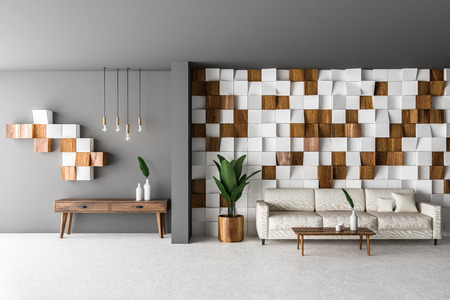The Timeless Charm of Wallpaper in British Homes
Wallpaper has always played a special role in British interiors, bringing a unique sense of character and warmth to homes across the UK. From grand Victorian houses with intricate damask prints to cosy terraced cottages adorned with delicate florals, wallpaper is part of our design heritage. It acts as a subtle storyteller, reflecting personal tastes and family histories while adding depth and texture to rooms. This longstanding tradition sets the perfect foundation for blending wallpaper with other natural materials—like wood, stone, and fabrics. By combining these elements, British homeowners can create spaces that feel both timeless and uniquely personal, where every surface contributes to a harmonious yet lively atmosphere. Whether you’re drawn to the rich patina of oak panelling or the cool elegance of Cotswold stone, wallpaper provides an adaptable canvas that effortlessly ties together old and new, classic and contemporary. This thoughtful layering not only celebrates the distinctive style found in British homes but also elevates daily living into something truly special.
2. Pairing Wallpaper and Wood: Cosy Cottages to Contemporary Flats
Bringing together wallpaper and wood is a classic approach in British homes, from the snug cottages of the countryside to sleek London flats. This pairing evokes both warmth and sophistication, drawing on centuries-old traditions as well as modern design sensibilities. The secret lies in how you layer these materials—choosing appropriate textures, finishes, and colours to create depth while maintaining harmony.
Classic Techniques: Wainscoting and Panelling
Wainscoting is a time-honoured technique in the UK, adding an elegant yet practical touch to hallways, dining rooms, and even bathrooms. By combining painted or stained wooden panelling with patterned wallpaper above, you achieve a balanced look that feels both refined and inviting. For a more contemporary twist, consider full-height wall panelling paired with bold geometric wallpapers for an updated take on tradition.
Layering Ideas for Different Spaces
| Room Type | Wood Element | Wallpaper Style | Effect Created |
|---|---|---|---|
| Sitting Room | Oak wainscoting | Floral or damask prints | Cosy, timeless English charm |
| Kitchen Diner | Rustic open shelving | Botanical or graphic patterns | Breezy cottage feel with functional display space |
| Modern Flat Bedroom | Sleek walnut headboard wall | Monochrome or metallic wallpapers | Minimalist luxury with subtle texture contrast |
| Hallway | Pine tongue-and-groove panelling | Stripes or nature-inspired motifs | Airy entrance with visual interest and durability |
Tips for a Cohesive Look
- Colour Coordination: Pick shades from your wallpaper pattern to use in your woodwork paint or stain for seamless flow.
- Texture Balance: Mix matte wooden surfaces with slightly glossy wallpapers for tactile variety without overwhelming the senses.
- Zoning: Use wooden elements like shelves or dado rails to break up expanses of wallpaper, creating defined zones in open-plan spaces.
- Bespoke Touches: Customise shelving or cabinetry to echo shapes found in your wallpaper—think curved edges if you’ve chosen Art Nouveau prints.
This thoughtful combination of wallpaper and wood can transform any room into a celebration of British style—whether you’re inspired by heritage cottages or crave the clean lines of urban living. By layering textures and tones mindfully, you’ll achieve both comfort and polish, making your home truly your own.

3. Blending Wallpaper with Stone Accents
In many British homes, the character of exposed brick, original stone fireplaces, or a striking feature wall is cherished as part of the property’s heritage and personality. When thoughtfully combined with wallpaper, these textured elements create a harmonious balance between tradition and modern style. To achieve this tactile, grounded feel, consider using wallpaper to highlight or frame your stonework rather than overpower it. For example, choose a subtle botanical or geometric print to complement a rustic brick chimney breast, or opt for soft, muted tones that echo the natural hues of limestone or slate. This approach allows the beauty of the stone to remain centre stage while adding warmth and depth through pattern. For those with grander period properties, pairing classic damask wallpaper with an ornate fireplace can accentuate the room’s history without feeling dated. In smaller spaces or contemporary flats, using a wallpapered alcove next to a raw brick feature wall offers contrast and visual interest without cluttering the room. Remember, less is often more: keep furnishings simple and let the textures do the talking. By blending wallpaper with stone accents in this way, you embrace a cosy yet sophisticated look that feels unmistakably British.
4. Introducing Fabrics: Softness and Texture
One of the most delightful ways to enhance the character of wallpaper is by incorporating rich fabrics throughout your living space. In true British homes, textiles like velvet curtains, woollen throws, and upholstered furniture are not just about warmth; they also add layers of softness and texture that create a welcoming, lived-in atmosphere. Selecting the right combination takes a keen eye for balance and an appreciation for tactile comfort. Below are some practical tips for harmonising wallpaper with sumptuous fabrics:
Tips for Pairing Wallpaper with Luxurious Fabrics
| Wallpaper Type | Recommended Fabric Pairings | Style Effect |
|---|---|---|
| Floral Prints | Velvet curtains in solid colours, classic tartan woollen throws | Cosy cottage or vintage charm; adds British nostalgia |
| Geometric Patterns | Linen or cotton upholstery, minimalistic textured cushions | Modern touch with subtle softness |
| Textured Wallpapers (e.g., grasscloth) | Woollen throws, boucle armchairs, tweed footstools | Layered warmth and inviting tactile feel |
| Dark or Moody Wallpapers | Light velvet drapes, silk scatter cushions, faux fur rugs | Bounces light around; keeps the space from feeling heavy |
Cohesion and Contrast: Achieving Visual Balance
The key to creating a balanced British living space lies in using contrast wisely. If your wallpaper features bold designs or deep hues, opt for neutral or complementary-toned fabrics to avoid overwhelming the room. Conversely, if your wallpaper is subtle or pastel, you can be more adventurous with vibrant velvets or patterned woollen accents. Remember to vary textures—pair smooth wallpapers with plush fabrics and vice versa—to prevent monotony and enrich the sensory experience.
Practical Considerations for Everyday Life
When choosing fabrics, think about durability and ease of maintenance—especially in busy family spaces or pet-friendly homes. Woollen throws can be easily refreshed, while removable cushion covers make upkeep simple. Velvet may need a little extra care but rewards you with an unmistakable air of British luxury. By thoughtfully mixing wallpaper with carefully selected fabrics, you can craft a home that feels both elegant and genuinely comfortable—a true reflection of British style at its best.
5. Practical Advice: Installation and Maintenance
When combining wallpaper with wood, stone, and fabrics, a thoughtful approach to installation is essential for a polished finish. Start by ensuring all surfaces are clean, dry, and even. For wallpaper next to timber panelling or skirting, use a sharp blade to achieve a crisp edge, and consider sealing any gaps with decorator’s caulk for a seamless transition. If you’re working alongside exposed brick or stone, apply a lining paper first to smooth out rough patches and help your wallpaper adhere properly—this is especially important in older British homes where walls can be uneven.
For areas where fabric panels meet wallpaper—such as upholstered headboards or textile wall art—make sure both materials are secured with appropriate adhesives or fixings. Double-check that no excess glue seeps onto the fabric, as this can cause staining. When joining different textures, such as velvet against a patterned paper, use a subtle trim or bead moulding to hide raw edges and create a tailored look.
To keep your layered feature looking fresh, regular maintenance is key. Dust wooden trims and stone surfaces weekly using a soft cloth or brush attachment on your vacuum cleaner. For wallpaper, gently wipe with a dry microfibre cloth; if it’s washable paper, spot-clean marks with diluted washing-up liquid but avoid over-wetting. Fabric accents may need an occasional hoovering on low suction or a gentle lint roller for everyday upkeep.
Finally, be mindful of moisture—especially in British bathrooms or kitchens where condensation can build up quickly. Opt for moisture-resistant wallpapers and seal adjacent woodwork to prevent warping. With the right preparation and a practical cleaning routine, you’ll ensure your layered scheme stays tidy and timeless for years to come.
6. Styling Inspiration: Real British Homes
There’s something truly special about the character of a British home—those lived-in corners, the layered textures, and the subtle blend of heritage with contemporary style. Across the UK, homeowners are embracing the art of combining wallpaper with wood, stone, and fabric to create spaces that feel both unique and welcoming. Picture a Victorian terrace in Bristol where delicate botanical wallpaper is paired with exposed brickwork and a rich walnut sideboard, giving the room warmth and an inviting sense of history. In a modern Manchester flat, geometric wallpaper acts as a bold backdrop to a sleek oak dining table and tactile linen curtains, bringing together crisp lines with soft touches for an effortlessly stylish look.
It’s not just about making things pretty—it’s about function too. British homes often make clever use of small spaces: think wallpapered alcoves framed by painted wooden shelves, or a hallway where patterned paper meets natural flagstone flooring. The mix is practical, durable, and always full of personality. In country cottages from Devon to the Lake District, you’ll find floral wallpapers set against original timber beams and stone hearths, with chunky knit throws adding that essential layer of comfort. These interiors aren’t showrooms; they’re homes where muddy boots are welcome and every piece tells a story.
What ties these spaces together is an appreciation for authenticity and individuality—a classic British trait. Whether it’s through upcycled furniture against textured walls or a fusion of vintage fabrics with modern prints, these homes reflect real lives and real people. By thoughtfully mixing wallpaper with wood, stone, and textiles, each homeowner creates a setting that feels grounded, personal, and unmistakably British.

